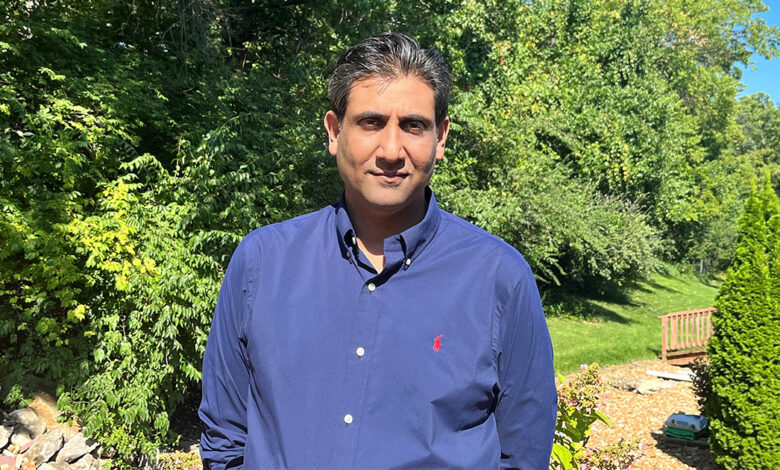Comprehensive, longitudinal patient records – keys to success


American patients will see an average of 18.7 different doctors during their lives. Each encounter will generate its own data, including diagnoses, vital statistics, lab results, medications and more.
Assembling all of this into a single, comprehensive record, even within the same health system, is challenging, to say the least.
But having that longitudinal medical record is key to providers’ ability to care for patients effectively and efficiently. Add payers to the mix and the potential for incomplete records grows even more.
Pawan Jindal is CEO and founder of Darena Solutions, vendor of a platform for healthcare data management. He knows the challenges of piecing together comprehensive, longitudinal patient records.
We interviewed Jindal to discuss why the need for comprehensive, longitudinal patient records; what the challenges are to assembling them; how hospitals and health systems can piece them together and share them among hospitals, labs, payers and providers; and what kinds of results provider organizations can achieve by having true longitudinal medical records.
Q. Why does the healthcare industry need longitudinal and comprehensive patient records?
A. Longitudinal and comprehensive patient records are foundational to delivering high-quality healthcare. They offer a complete picture of a patient’s health journey, ensuring medical professionals can provide continuity of care.
Data completeness enhances patient safety by preventing potential drug interactions or allergic reactions and aids in evidence-based decision making. They are a safety net, catching potentially adverse events like harmful drug interactions or overlooked allergies, thereby enhancing patient safety considerably.
Beyond the immediate clinical advantages, these records streamline healthcare processes and optimize resource utilization. Reducing redundant tests, procedures and interventions leads to significant cost savings, benefiting healthcare institutions and patients.
This optimization is especially crucial in the context of chronic disease management. With conditions like diabetes or heart disease that require consistent monitoring, having a thorough record helps track the disease’s progression and the efficacy of different treatment approaches over extended periods.
On a larger scale, these comprehensive records transcend their role as mere documentation tools. They become essential for advancing medical research, fostering evidence-based decision making, and informing public health strategies.
Whether it’s epidemiological studies or clinical trials, a robust patient history can offer invaluable insights. Furthermore, in today’s interconnected healthcare environment, where a patient might consult multiple specialists, these records enhance interprofessional communication, ensuring the care remains consistent, coordinated and aligned with the patient’s needs.
Lastly, from the patient’s perspective, comprehensive records do more than inform healthcare providers. By giving patients a more precise and transparent understanding of their health journey, the records empower them to make informed decisions and participate actively in their own care.
From an administrative standpoint, such records are crucial, serving as undeniable evidence in legal and compliance scenarios and safeguarding providers and patients.
Q. What are the challenges to assembling longitudinal and comprehensive patient records?
A. Assembling longitudinal and comprehensive patient records is essential but challenging. One of the foremost obstacles to interoperability is disparate electronic health record systems from various institutions that fail to communicate seamlessly.
This lack of effective communication leads to data fragmentation, with patient information scattered across different sources. Even when this data is collatable, organizations using it are concerned about privacy, security and compliance with regulations like HIPAA or GDPR.
Ensuring data quality, accuracy and standardization is another significant hurdle, especially given the diverse terminologies and recording practices used by different institutions. Patient participation is crucial to this process, but they might sometimes withhold or forget to provide pertinent details.
From an operational perspective, the financial strain of setting up and maintaining these systems and the time it demands from healthcare providers can be daunting.
Q. How can hospitals and health systems piece together longitudinal medical records that can be shared among hospitals, labs, payers and providers?
A. Hospitals and health systems face the formidable task of piecing together longitudinal medical records that are shareable across various healthcare entities. A foundational step toward this objective is the standardization of data formats and terminologies, with initiatives like HL7 and FHIR paving the way for effective electronic health data exchange.
Prioritizing interoperability in EHR systems and health information exchanges ensures fluid data communication across platforms. Cloud-based EHR systems offer a promising avenue with centralized storage and real-time sharing capabilities. Additionally, introducing unified patient identifiers can streamline record matching and merging from diverse sources.
For this interconnected framework to thrive, fostering collaboration and partnerships among stakeholders is essential, as is adherence to stringent data privacy and security protocols. Regulations like HIPAA and GDPR provide crucial guidelines on patient information management. Engaging patients directly through platforms that grant them access to their records can further support this comprehensive approach.
However, technology alone isn’t the answer. Regular staff training on technical and ethical data-sharing aspects is crucial. Lastly, an iterative process informed by feedback from all stakeholders, be it hospitals, labs, payers or providers, ensures a continual system refinement to meet everyone’s needs.
The journey to a cohesive shared medical record system necessitates technological innovation, collaboration, and an unwavering commitment to data accuracy, privacy and security.
Q. What kinds of results can healthcare provider organizations achieve by having true longitudinal medical records?
A. Proper longitudinal medical records are a transformative asset for healthcare provider organizations, promising various benefits spanning clinical, operational and research dimensions. The potential for markedly improved patient outcomes is at the heart of clinical care.
With a holistic view of a patient’s medical journey, healthcare providers can diagnose with greater precision, anticipate health challenges and customize treatments to the individual’s unique needs.
Such records also champion continuity of care. As patients navigate the healthcare landscape – whether transitioning from primary care to specialists or moving between hospitals – their comprehensive health record remains a constant, ensuring every healthcare professional they encounter is well-informed.
Financially, the healthcare landscape stands to benefit significantly. Redundant tests and procedures resulting from fragmented patient data can be curtailed, resulting in tangible cost savings for institutions and patients.
Furthermore, for the growing cohort with chronic conditions, having a continuous record becomes invaluable for tracking disease progression and tailoring long-term care strategies. Safety improves, as well; with comprehensive information on allergies, past procedures and medications, the risk of medical errors dwindles.
The advantages of comprehensive patient records are much broader than immediate patient care. It engenders trust between the providers and patients and more patient-centered consultations. From a research perspective, these records are gold mines, offering deep insights that can fuel medical advancements and public health initiatives.
In a world that’s becoming increasingly litigious, having a meticulous, continuous record provides healthcare organizations with a firmer footing in legal scenarios and ensures better regulatory compliance.
On a macro scale, by analyzing these records in aggregate, systems can glean insights into population health trends and design interventions to meet community health needs. Finally, in the digital transformation era, integrating longitudinal records with analytics and AI paves the way for real-time clinical decision support, further elevating the standard of care.
Follow Bill’s HIT coverage on LinkedIn: Bill Siwicki
Email him: [email protected]
Healthcare IT News is a HIMSS Media publication.




